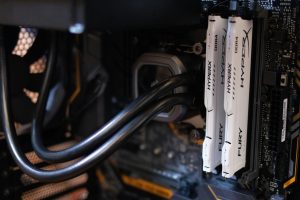The surprising science behind why certain devices feel so responsive
When it comes to technology, there is a lot that we take for granted, especially in terms of responsiveness. We expect our devices to respond immediately to our touch or commands, and when they don’t, it can be frustrating. But have you ever stopped to wonder why some devices feel more responsive than others? Is it just a matter of perception, or is there some underlying science behind it?
The Human Factor
Believe it or not, one of the main reasons why some devices feel more responsive is because of our own biology. Our brains are wired to respond faster to certain stimuli than others. For example, we are more sensitive to sounds in the frequency range of 2,000 to 5,000 Hz, which is why devices with higher-pitched sounds tend to feel more responsive.
Additionally, our brains are hardwired to detect patterns and movements, which is why we tend to feel that devices with smooth animations or transitions are more responsive compared to those with choppy or glitchy movements.
The Science of Touch
But it’s not just our brains that play a role in our perception of device responsiveness. There is actual science behind the way we physically interact with our devices. When we touch a screen or press a button, our brains expect to feel some sort of physical feedback, which is known as haptic feedback.
This physical feedback is what makes devices feel more responsive to us. For example, when you type on a physical keyboard, you feel the tactile feedback of the keys clicking, and this gives you a sense of accomplishment and makes you feel like you are actively engaged with the device. This is why some people still prefer physical keyboards over touchscreens, as it provides a better sense of control and responsiveness.
The Role of Software
Of course, it’s not just our biology and physical touch that contribute to the responsiveness of a device. The software also plays a crucial role. The way a device’s operating system is designed and optimized can significantly affect its responsiveness.
One of the main factors that contribute to how responsive a device feels is its touch latency. Touch latency is the time it takes for a device to sense your touch and respond accordingly. The lower the touch latency, the more responsive the device will feel. This is why high-end smartphones and tablets, which have lower touch latency, tend to feel more responsive compared to budget devices.
The Importance of Feedback
Another important aspect of responsive devices is providing feedback to the user. This can come in the form of visual or audio cues, such as a loading animation or a beep when a button is pressed. These feedback mechanisms not only help us understand that our device has received the command, but they also give us a sense of control and responsiveness.
Moreover, devices that provide instant feedback tend to feel more responsive compared to those with a delay. For example, when you double click on a computer screen and the response is immediate, it gives the illusion that the device is responding quickly, even though it may have taken a split second for the action to register.
Conclusion
The surprising science behind why certain devices feel so responsive is a combination of our biology, physical touch, software optimization, and feedback mechanisms. Our brains are wired to perceive certain stimuli as more responsive, and the way a device is designed and optimized plays a significant role in its responsiveness.
Understanding these factors can help us appreciate the technology we use and make better choices when it comes to selecting devices that suit our needs. So the next time you pick up a device and it feels extra responsive, remember that there is actually some scientific reasoning behind it!










